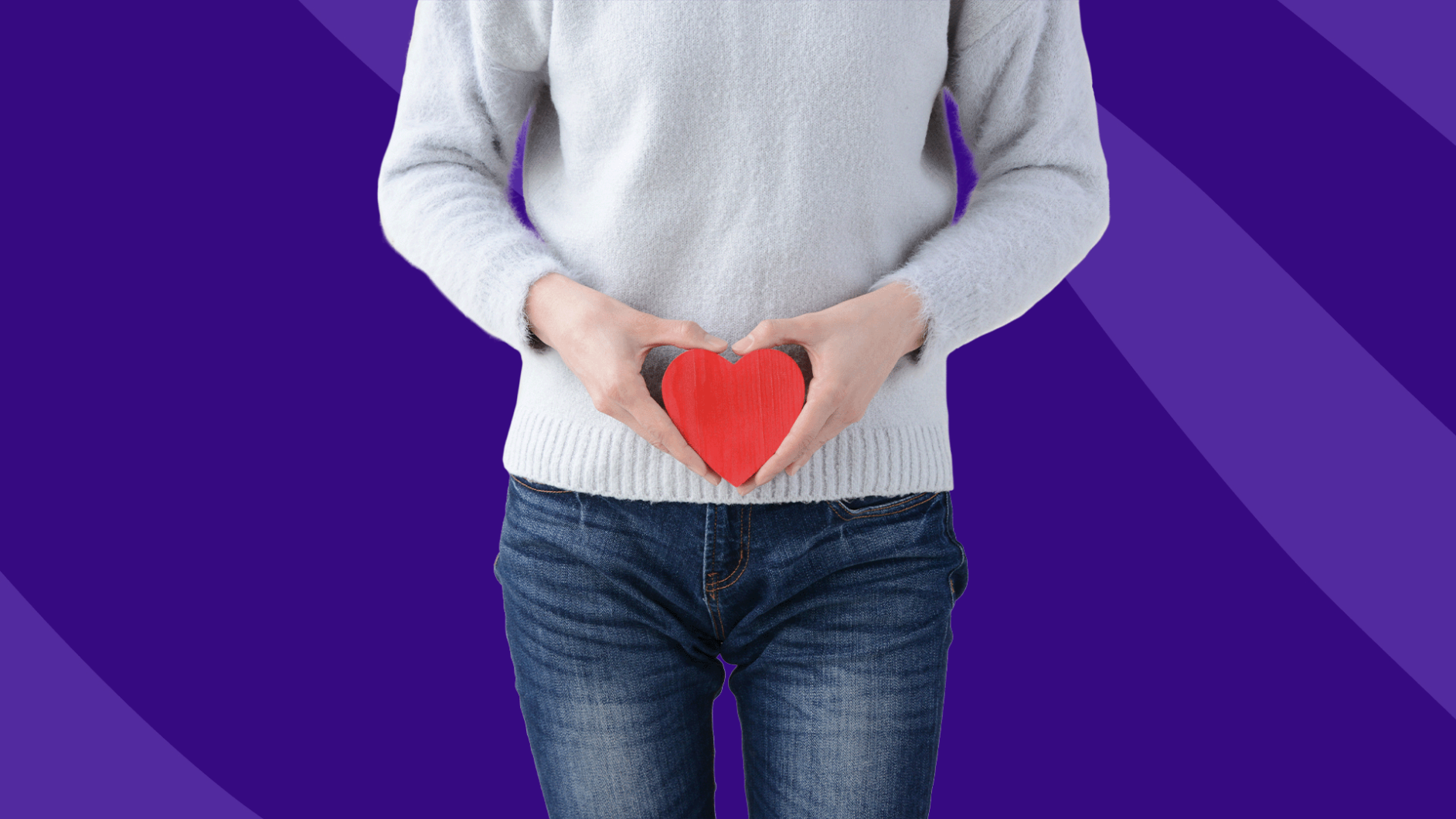Bacterial vaginosis (BV)is a vaginal infection affecting 29% to 49% of women of reproductive age in the United States. BV is one type of vaginitis, which are conditions that cause vaginal inflammation and infection. Others include vaginal yeast infections and trichomoniasis (a sexually transmitted infection caused by a parasite).
Antibiotics are the standard therapy approved by the U.S. Food and Drug Administration for treating BV. However, because long-term effective BV treatment is still a necessity for some women, many are considering other treatment approaches, including home remedies, especially when BV reoccurs after antibiotic treatment. This article provides five potential home remedies for bacterial vaginosis. We’ll also share which are ineffective ways of treating BV to help you sort fact from fiction.
What causes BV?
Bacterial vaginosis is caused by an imbalance in natural bacteria in the vagina. The dominant microorganism in a healthy vagina is the good bacteria, lactobacilli, which make up 90% to 95% of vaginal flora. Lactobacilli has anti-inflammatory properties and maintains a healthy vaginal microbiome by inhibiting the growth of harmful bacteria. An overgrowth of bad bacteria like Prevotella, Gardnerella, Atopobium vaginae, Mobiluncus, or Bacteroides can disrupt the vaginal microbiome. When the disrupted microbiome lacks lactobacilli—good bacteria—it can lead to BV.
BV has been linked to having multiple sexual partners or a new partner, not using condoms, douching, and HSV-2 (the virus that causes genital herpes). Symptoms of BV include gray, white, or green vaginal discharge, fish-like vaginal odor, an itchy vagina, and painful urination.
Recurrent bacterial vaginosis is a public health problem. “Recurrent BV refers to three or more confirmed BV infections in a year,” says Kecia Gaither, MD, double board-certified OB/GYN and director of Perinatal Services/Maternal Fetal Medicine at NYC Health + Hospitals/Lincoln in the Bronx. “Recurrent BV could reflect reinfection, inadequate treatment, infection relapse, or antimicrobial resistance, to name a few.”
There is a high rate of BV recurrence—80% rate of recurrence three months following effective treatment. This is why some women consider alternate treatment approaches.
4 home remedies for BV
Before trying any home remedies for BV, you should discuss them with your healthcare provider.
1. Boric acid
“Boric acid helps relieve bacterial vaginosis by lowering the pH level and eliminating bacteria,” says Monte Swarup, MD, FACOG, board-certified OB-GYN in Chandler, Arizona, and founder of Vaginal Health Hub.
A study published in 2009 suggests that women with bacterial vaginosis treated with a combination of nitroimidazole antibiotics (such as metronidazole) and boric acid achieved an 88% to 92% cure rate. A review published in 2011 also established a 40% to 100% cure rate for bacterial vaginosis. The review concluded that boric acid was a safe and affordable treatment option for women who have chronic and recurrent symptoms of bacterial vaginosis, especially when standard treatment is ineffective.
Always check with your doctor before using boric acid vaginal suppositories, as more research is needed to validate its effectiveness. It’s also important to note that boric acid should only be used as a vaginal suppository. It should not be taken orally nor be used while pregnant to avoid the risk of adverse side effects.
2. Vitamin C
Vitamin C may help with recurrent bacterial vaginosis. It is used after the standard antibiotic treatment to maintain an acidic vaginal environment. BV-associated bacteria have very limited growth when the vaginal PH is acidic.
A clinical trial published in 2011 suggested that vitamin C had a higher cure rate of 55.3% versus 25.7% for placebo (inactive medicine) in women treated for bacterial vaginosis. Another study found that regular use of vitamin C vaginal tablets for six months reduced the recurrence rate of bacterial vaginosis. Both studies used slow-release silicone-coated vitamin C tablets, which are unavailable in the United States. However, experts recommend using enteric-coated vitamin C 250 milligram (mg) tablets—the oral tablets that you find in the vitamin aisle, but you will use them vaginally. After your period stops, insert one tablet vaginally once a day for six days.
3. Dietary changes
Experts have yet to understand how diet influences the vaginal microbiome. However, some studies have associated bacterial vaginosis with poor diets, such as those that include foods that raise blood glucose and foods that are high in fat, low in dietary fiber, and deficient in vitamins and micronutrients such as B-carotene and betaine. Dr. Geither agrees, saying that deficiencies in Vitamins A, C, D, and E, calcium, folate, and beta-carotene contribute to BV.
On the other hand, a high intake of folate, vitamin E, and calcium has been associated with a reduced risk of bacterial vaginosis. Additionally, following the Dietary Guidelines for Americans by the United States Department of Agriculture (USDA) may also lower the risk of bacterial vaginosis—by helping you incorporate more vitamins and nutrients into your diet and limiting unhealthy foods. The USDA guidelines recommend following a healthy dietary pattern that includes vegetables, fruits, whole grains, fat-free or low-fat dairy products, protein foods, and healthy oils from seafood and nuts.
4. Probiotics
Probiotics containing lactobacillus may help reduce the recurrence of bacterial vaginosis. Lactobacillus can kill or inhibit some microorganisms involved in bacterial vaginosis. Some studies suggest that vaginal probiotics (inserted directly into the vagina), administered after antibiotic therapy, reduce the risk of bacterial vaginosis recurrence. However, there is a need for more conclusive evidence to support the use of commercially available probiotics. You should always discuss this with your healthcare provider and get their approval before using any such products. Oral probiotics found in foods and probiotic supplements may also help reinstate normal vaginal flora by promoting the growth of beneficial bacteria such as lactobacillus; however, the mechanism of action is not fully understood.
RELATED: Probiotics 101: What are they? And which are the best?
Natural remedies for BV that don’t work
Some purported remedies, like apple cider vinegar and tea tree oil, need more scientific evidence, as they are mostly anecdotal claims supporting their use. Others, such as vaginal douching, shouldn’t be used at all.
1. Apple cider vinegar
Many articles suggest that apple cider vinegar baths or supplements may be effective for treating bacterial vaginosis. This is based on the fact that apple cider vinegar contains acidic substances (including acetic acid and citric acid) and may keep the vagina’s environs acidic—thus, making it uninhabitable for pathogens responsible for bacterial vaginosis. However, there is a lack of sufficient evidence to support these submissions, as the effects of apple cider vinegar on bacteria associated with bacterial vaginosis have not been studied.
RELATED: 8 health benefits of apple cider vinegar
2. Tea tree oil
There are claims that tea tree oil pessaries (inserted into the vagina) may treat bacterial vaginosis. In fact, one study from 1991 found that tea tree oil killed and inhibited the growth of certain types of bacteria associated with bacterial vaginosis, with the exception of lactobacilli. It’s important to note the study was not peer-reviewed and was not done on human subjects. Hence, there is a need for newer human studies to confirm that it is actually effective for the treatment of bacterial vaginosis.
3. Vaginal douching
Douching is the practice of washing or cleaning the inside of the vagina with water or other liquids (such as vinegar, apple cider vinegar, coconut oil, baking soda, hydrogen peroxide, or iodine). It has been linked to an increased risk of bacterial vaginosis, as it increases BV-associated bacteria. Some studies suggest that douching depletes lactobacilli. Douching is strictly not recommended because of associated health complications—it can lead to pelvic inflammatory disease, fertility problems, and increased risk of sexually transmitted infections or sexually transmitted diseases.
How to treat BV when natural remedies don’t work
Antibiotics are the standard treatment for bacterial vaginosis. You should reach out to your healthcare provider if the home remedies fail to provide symptom relief. They will recommend some antibiotics that may help.
The Centers for Disease Control and Prevention (CDC) recommends:
- Metronidazole 500 mg orally two times daily for seven days, or
- Metronidazole vaginal gel 0.75% one full applicator (5 g) intravaginally, once a day for five days, or
- Clindamycin vaginal cream 2% one full applicator (5 g) intravaginally at bedtime daily for seven days.
The CDC also shares the following alternative regimens:
- Clindamycin 300 mg orally two times daily for seven days, or
- Clindamycin ovules 100 mg intravaginally once at bedtime for three days, or
- Secnidazole 2 g oral granules in a single dose, or
- Tinidazole 2 g orally once daily for two days, or
- Tinidazole 1 g orally once daily for five days
For women with recurrent bacterial vaginosis, a healthcare provider may recommend one of the following treatment methods:
- 0.75% metronidazole vaginal gel or 750 mg metronidazole vaginal suppository twice weekly for at least three months
- An oral nitroimidazole medication (metronidazole or tinidazole 500 mg twice daily for seven days), followed by 600 mg of intravaginal boric acid daily for 21 days and suppressive 0.75% metronidazole gel twice weekly for 4–6 months.
During the course of antibiotic treatment, it is advised to abstain from sex or practice safe sex (use condoms always and correctly during sexual activities). Bacterial vaginosis has been associated with serious complications during pregnancy such as including premature rupture of membranes (breaking of the amniotic sac before labor), preterm birth, pregnancy loss, intra-amniotic infection, and postpartum endometritis (inflammation or irritation of the uterine lining after delivery). Hence, if you notice symptoms of BV while pregnant, you should seek medical advice from your gynecologist right away. They will recommend the best treatment for your symptoms.
How to prevent bacterial vaginosis
There are steps you can take to prevent bacterial vaginosis:
- Always use condoms correctly and consistently during sex.
- Reduce your number of sex partners.
- Avoid vaginal douching.
- After urinating or passing stool, cleanse thoroughly and always wipe front to back to avoid transferring bacteria from the stool into the anus.
- Wash your sex toys after use to avoid harboring pathogenic bacteria.
- Quit or reduce the number of cigarettes you smoke, as cigarette use has been associated with BV.
- Ask your doctor about your risks before using an intrauterine device (IUD), as IUDs may be associated with an increased risk of BV.
- Practice good hygiene, such as washing the vagina with mild, unscented soap and water—or just water—and avoiding using perfumed products on your vagina.
- Wear breathable cotton underwear.
When to see a doctor for BV
See a doctor when you notice initial signs of BV, especially if you are pregnant—you’ll need to start treatment immediately to avoid the risk of adverse pregnancy outcomes. If you’re concerned that the antibiotic therapy is not working or that you’re having recurrent BV (three or more times in a year), you should see your gynecologist or primary care doctor.
Sources
- Bacterial vaginosis: a review of approaches to treatment and prevention, Frontiers in Reproductive Health (2023)
- Bacterial vaginosis biofilms: Challenges to current therapies and emerging solutions, Frontiers in Microbiology (2016)
- Bacterial vaginosis: A brief synopsis of the literature, European Journal of Obstetrics & Gynecology and Reproductive Biology (2020)
- Boric acid addition to suppressive antimicrobial therapy for recurrent bacterial vaginosis, Sexually Transmitted Diseases (2009)
- Boric acid for recurrent vulvovaginal candidiasis: the clinical evidence, Journal of Women’s Health (2011)
- Efficacy of vitamin C vaginal tablets in the treatment of bacterial vaginosis: a randomised, double blind, placebo controlled clinical trial, Arzneimittelforschung (2011)
- Efficacy of vitamin C vaginal tablets as prophylaxis for recurrent bacterial vaginosis: a randomised, double-blind, placebo-controlled clinical trial, Journal of Clinical Medicine Research (2013)
- Frequently asked questions: Bacterial vaginosis, Massachusetts General Hospital (2020)
- Dietary Guidelines for Americans, United States Department of Agriculture (2021)
- In vitro susceptibilities of lactobacilli and organisms associated with bacterial vaginosis to Melaleuca alternifolia (tea tree) oil, Antimicrobial Agents and Chemotherapy (1999)
- Douching, Office on Women’s Health (2022)
- Bacterial vaginosis, Centers for Disease Control and Prevention (2021)
- Association between cigarette smoking and the vaginal microbiota: a pilot study, BMC Infectious Diseases (2014)











